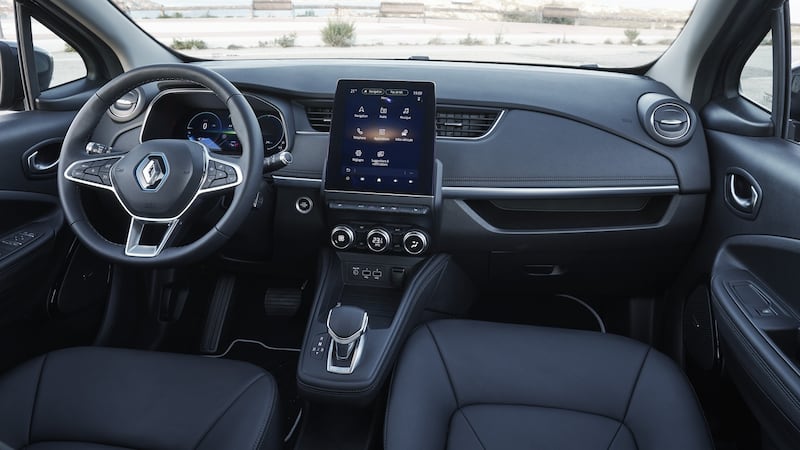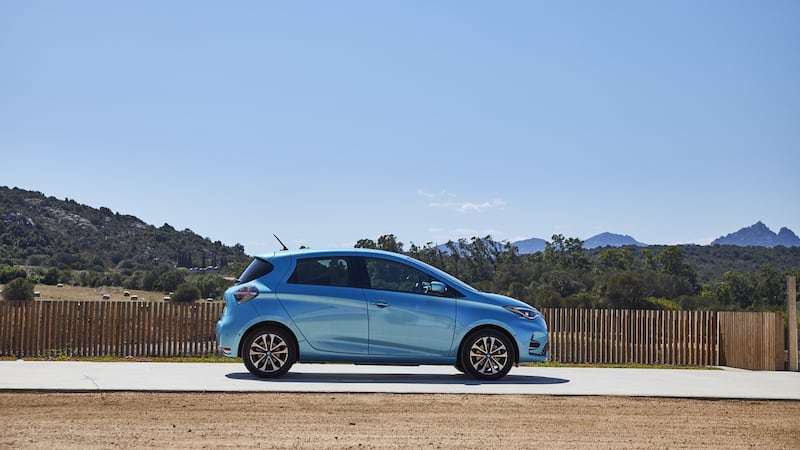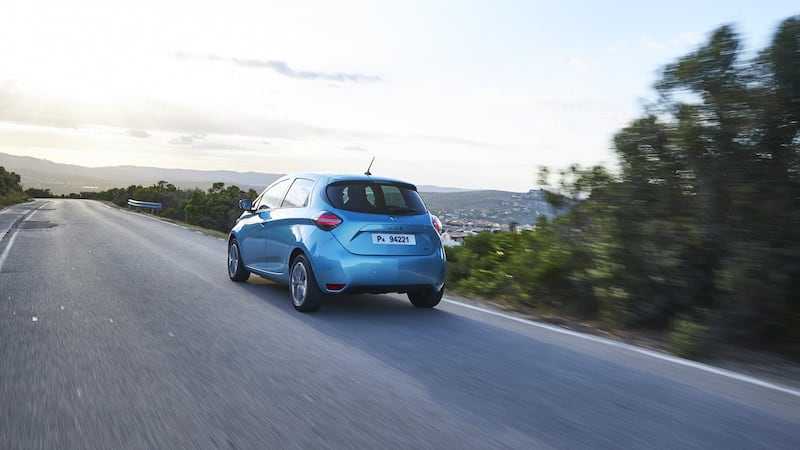Renault has put its 10 years of electric car production experience to good use with its latest refresh of the Zoe. The third generation Zoe changes little on the outside, but inside and under the skin the electric car is thoroughly overhauled. The new Zoe comes in two forms the R110 (110hp) and more powerful R135. We've been testing the 135hp/225nm version in Sardina.
The Zoe’s tall body shell is carried over and only slight and relatively low cost modifications have been made to the Paris built car. The suspension gets a slight tweak that has a positive impact on the ride quality. The hatchback gets for the first time standard fit LED head and tail lights.
Another first are front fog lights. The electric motor powering the front wheels gains power and the rechargeable battery pack gains capacity. A new CCS ‘combo’ fast charging plug socket (an option on R110) sits behind a bolder diamond badge. This new AC/DC combined socket adds to Zoe’s already useful charging flexibility. The five seat car’s cabin gets the most visual makeover.
Upmarket cabin
Renault’s new interior design style is a positive change to what was a functional cabin. Soft touch points of contact upgrade the ambiance. A new backlit multifunction steering wheel looks and feels the part. Soft dash materials and recyclables are present.

The redesigned automatic gear selector is perfectly positioned on a floating boom. An electronic parking brake with auto hold replaces the mechanical one. The GT Line gets a large 9.3 inch portrait mounted centre touch screen display, other grades get a 7 inch version - in the same housing. The driver gets a digital 10 inch display, a far cry from the first generation. Renault has a clever environmentally friendly in house fabric made from recycled plastic (PET) and seat belt waste. The fabric can be had as trim on the dash and doors. All manner of seat finishes are available from full leather to vegan friendly materials.
The Zoe’s electric motor gets a power boost in the R135 version (100kW). This increase can be felt more so in out of town driving where the Zoe can be driven with enthusiasm. Top speed is a modest 140km/h but the Zoe can really zip along at legal real world speeds. Strong pulling power is always on tap, so joining a motorway or entering a roundabout can be effortlessly done.
The Zoe’s platform accommodates a larger 52kWh battery pack that features redesigned battery cells that Renault says deliver the power equivalent of circa 4,727 iPhones. This higher capacity pushes the driving range from 300km to 395km (official WLTP rating) in summer weather when fully charged. Winter weather reduces an EV’s range. The refreshing reality with this Zoe is that everyday driving will not provoke range anxiety.
Zoe gets a host of electronic driving and safety aids. For the first time easy park assist semi-automatic parking and auto brake are available. Connectivity is improved with a revised ‘Easy-Link’ navigation system and the ‘My Renault’ smart phone app. The app allows users plan a journey based on the charger options along the way.
The Zoe’s ride comfort has never been a selling point but the R135 feels more composed and less like you’re the chassis. For the first time disc brakes feature on the rear replacing drums. There is a new ‘B’ selection on the gear lever that engages the regenerative braking function to gently slow the car. The B function allows near to one pedal driving when the battery is low and is a useful tool when going downhill to retard speed.
There are no Hyundai Kona-like steering wheel mounted 'B' paddles. On the hills away from the rugged coastline the Zoe performed like a hot hatch but with a much smoother power delivery. The car's pulling power from stationary or at any legal speed is truly impressive. You can corner with a greater degree of confidence also.
The CCS combo plug delivers both AC electricity and DC electricity to the battery. 150km of range can be harvested from 30 minutes charging at a 50kW DC fast charger (Zoe’s max charging rate). The battery pack will charge fully from empty overnight on a home charge point in 9h 25m using a 7kW AC wall box. A typical home has about 14kW of power available. Public chargers use industrial three phase power.

A two hour charge for new Zoe at a public 11kW AC charger will deliver 125km of range while a one hour charge at a 22kW AC public charger will deliver the same. The standard Zoe has a particularly fast in-built 22 KW charger unlike many similar EVs that have slower 7kW or 11kW in-built chargers. The new CCS fast charger plug is standard on the R135 and optional on the R110.
Jeremy Warnock of Renault Ireland says: "the CCS plug option is perfect for the expanding fast charging network in Ireland, while the standard 22kW AC Camelion plug is ideal for the patchy public charging network of today."
Just what the budget holds for EVs is uncertain, but Warnock pointed out another incentive to consider the Zoe suggesting that a company driver choosing a Zoe over say a diesel Captur crossover is the equivalent of a €6,000 pay increase thanks to zero per cent BIK tax.
Play, Iconic and GT Line are the grades. The R110 starts from €26,990 (net of incentives), the R135 Zoe starts from €30,990. Cars will arrive late this year for 201 registration. The new Zoe is a dramatic improvement and the R135 delivers the kind of driving range and performance to make it an everyday usable car.











